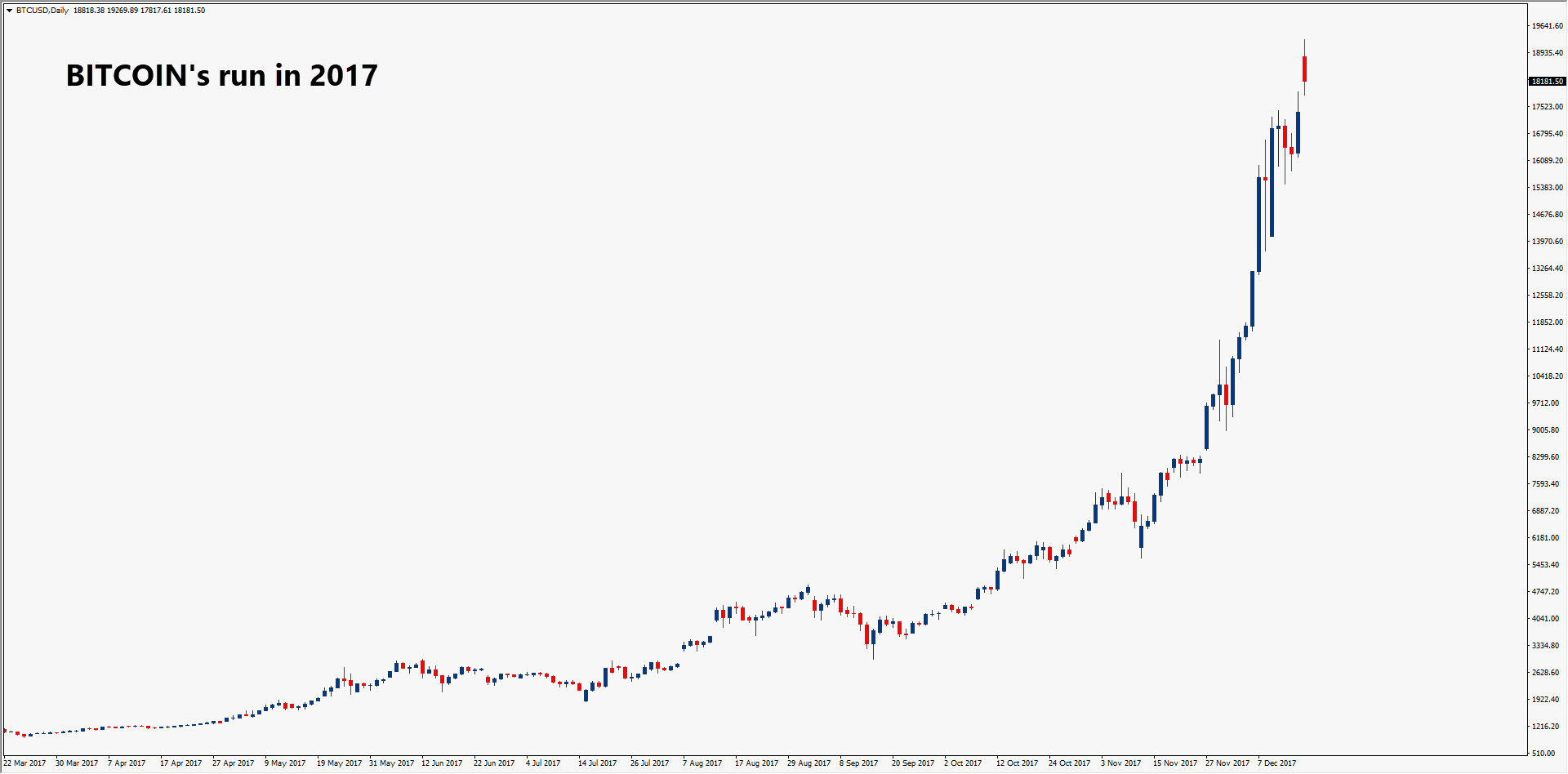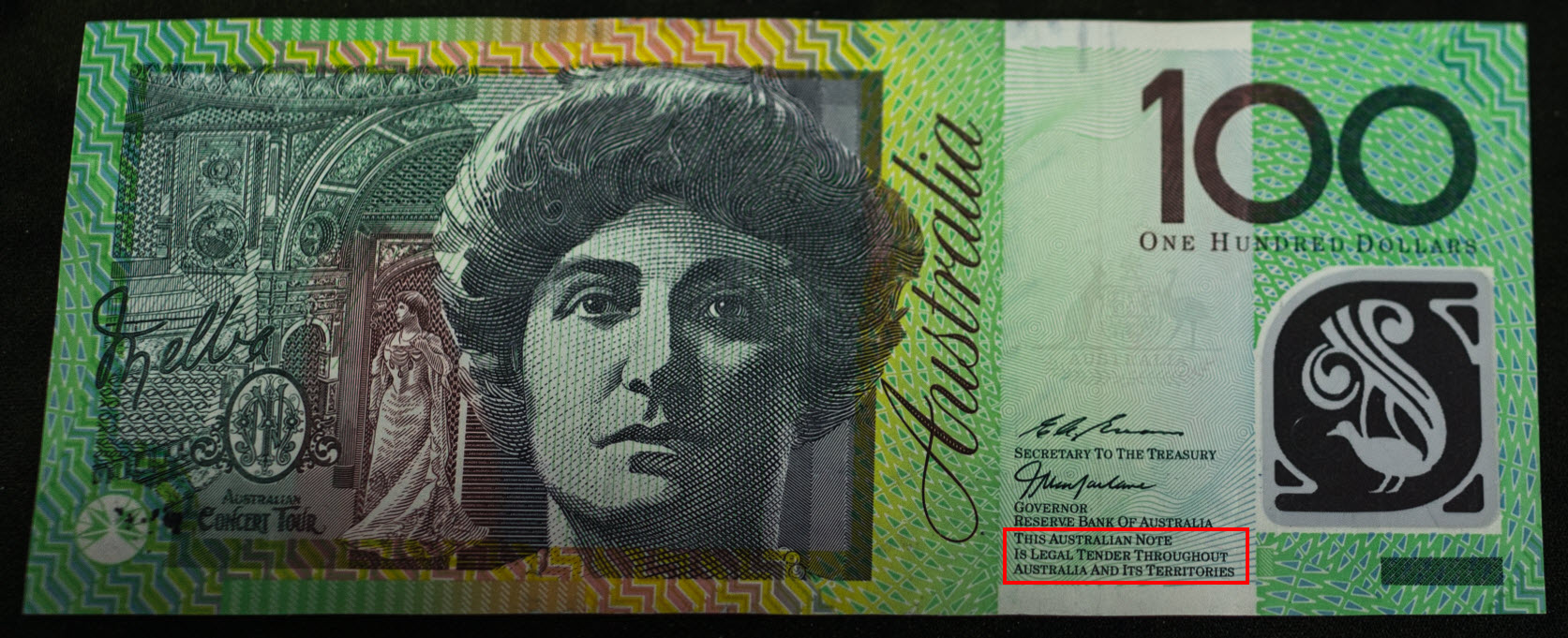With 2017 coming to a close, the story of the year has undoubtedly been the spectacular rise of Bitcoin. Unlike many of the markets we trade here at Trade View, cryptocurrencies are still very speculative markets that have not seen the liquidity provided by algorithms in other markets.
With the recent introduction of additional futures contracts, there are many questions on traders’ minds for 2018, three of which include:
- Will we see the algo’s begin to dominate these markets?
- Will volume’s and trading in Bitcoin surge?
- What about price? Is 2017 just the beginning of this speculative mania or will Bitcoin yet again double, triple or rise 10x from here?
To begin to answer these questions, we thought we would share a unique perspective on Bitcoin.
First – what is Bitcoin?
As we know it, Bitcoin has been touted as a digital currency with a finite supply of 21 million bitcoins. Designed to be decentralised, scarce, anonymous and secure- 2017 has seen its price rocket from 1000 to 20,000; an astonishing 1900% return in 1 year!

Chart 1: The meteoric rise of Bitcoin in 2017
How did this happen?
Firstly- a Bitcoin is created when it is ‘mined’. In simple terms, miners are computers that attempt to solve a certain math problem. ‘Mining’ is the discovery of new bitcoins, similar to that of any commodity such as iron, ore, or gold. However, in reality, it is simply the verification of bitcoin transactions on the public, decentralised ledger (known as the blockchain).
As time passes and more bitcoins come into circulation, the mining process becomes exponentially more difficult; thus fewer ‘new’ coins come into circulation. The costs associated with generating (mining) bitcoins also increase- from energy costs to storage and redundancies.
Many miners believe that if Bitcoin’s price continues to soar it will offset the rising costs of mining new coins.
But the real question is: Are these explosive returns we have seen over the past few years sustainable?
On one hand- If you think that Bitcoin will one day become major currencies and a major medium of exchange, then at current levels Bitcoin is heavily underpriced.
If however you believe this is a speculative mania, then history has shown that such speculation never ends well…
Bitcoin – Sustainability and Risks
Many people believe that Bitcoin and other cryptocurrencies could one day replace fiat currencies and money, such as the USD and the EURO.
Money as we know it is a mechanism used for commerce and trade. It is also the most liquid asset at any given place and time due to one primary factor: Trust.
Money is accepted as a form of payment worldwide because of this. People trust it, and they trust others will accept it. If Bitcoin is ever to replace a fiat currency, it will require the same (if not higher) levels of trust as current fiat currencies have.
For many pro-Bitcoin supporters this of no concern as the network has proven to be secure and trustworthy (with the exception of a few exchanges and wallet providers).
But what if sustainability is not so much about the risks of the technology, but legislation and regulation?
And so the onus is now on governments and policy makers.
Take for example:
On every Australian Dollar note you will find the words:
“LEGAL TENDER THROUGHOUT AUSTRALIA”

This is also true for many (if not all) other notes around the world.
For Bitcoin to replace (or co-exist) alongside fiat currencies, it ultimately must be accepted as a legal form of tender and in order for this to occur, governments and policy makers must provide legislation.
If legislation exists, then a regulatory branch is called upon for outlining the details of this legislation, and regulation is created.
We know that regulation is important. Regulation helps provide a stable framework. Perhaps one reason why Bitcoin has rocketed to current prices is the lack of regulation- to the point where it’s day-to-day volatility is not conducive to everyday commerce.
But we must not forget how markets work. With a ‘supposedly’ limited supply and surging demand, participants set their prices and if people are happy to bid for BTC/USD at $20,000 then there is no reason price cannot go there. We have seen it many times here on the desk: A market will trade at whatever price is deemed fair based on an agreement between buyers and sellers.
So if buyers continue to raise their prices this market will only continue higher. Who is to say it cannot go to 30, 40 or even $50,000 ???
Keep in mind however:
Unlike fiat currencies, the market price of Bitcoin (the accepted price) is not based on regulation, nor the economic activity of a nation, or the fundamental policies set by governments and central banks.
There is no floor and no reserve; and Bitcoin is not yet backed or guaranteed by any government or commodity.
Instead- it is purely based on the actions (and emotions) of participants driving price.
Bitcoin – Not a currency [yet…?], what is it?
Quite simply- until government and lawmakers pass regulation that allows Bitcoin to become an accepted form of legal tender, there are doubts and clouds over its sustainability going forward.
Also consider this: Nothing prevents two parties from accepting payment for a good or service tendered. A farmer may exchange a cow for a dozen sheep.
However when it comes time to pay taxes or a legal tender is required, governments will not accept payment in cows or sheep. For thousands of years governments and lawmakers have outlined what is an acceptable form as payment.
Stranger things have happened- but what if governments around the world announced that Bitcoin was to become illegal?
This is important as to this day, for consumers and businesses to ‘realise’ and account for profits (or losses) made via Bitcoin, an exchange back to a fiat currency (USD, AUD etc) is also necessary.
Conclusion
Should the day come when governments begin to accept Bitcoin as a form of payment, realistically speaking only then can we call it ‘money’.
Until then, it is simply another risk asset.
One of the problems governments and policy makers face is dealing with a decentralised network (such as the blockchain network), one which they do not have control over.
Setting up a reserve and regulatory system for a centralised currency is not a problem. However dealing with a decentralised network that we can all share in is much more challenging.
With the introduction of the CBOE and CME’s futures contracts, Bitcoin is one step closer to becoming a fully regulated product acknowledged by governments worldwide. With this, we expect more institutions to become involved, more algorithmic activity and much greater volume and liquidity in 2018.
However if there is one thing the law of supply and demand tells us it is this:
With a limited number of sellers, highers costs as time passes to extract more coins, and the number of producers (miners) shrinking over time, Bitcoin is showing many signs of a concave supply curve.
This means it would be foolish to rule out much higher prices!
Just as many never thought Bitcoin could go to $100, let alone $1000; it may prove foolish to think it couldn’t go to $100,000.
If history tells us one thing, it’s that prices always move to extremes further than anyone believes possible. And by the same accord- bubbles always ‘pop’ at some point…


